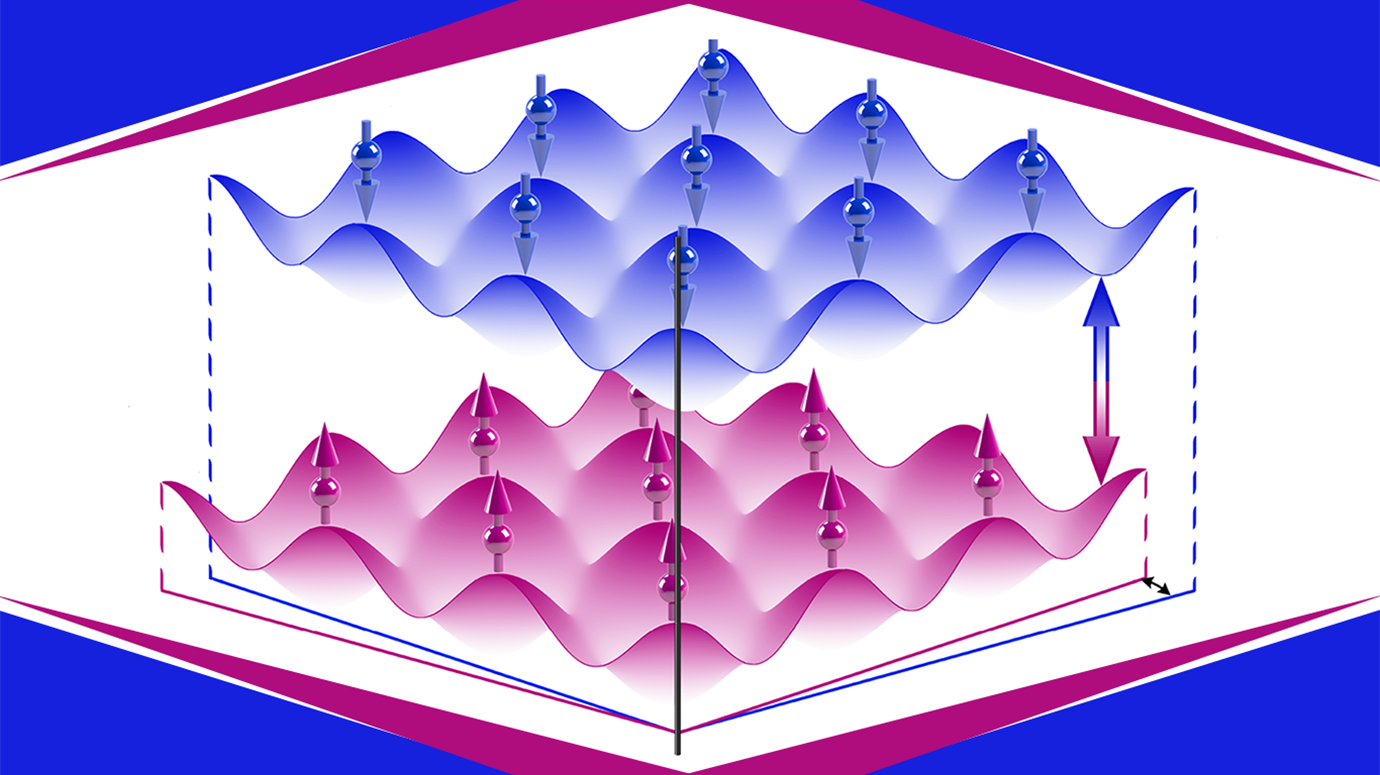Researchers from the University of Chicago and Shanxi University have revealed a method for using lasers to “simulate” a material that physicists have been searching for years due to its potential technological possibilities.
 New research by UChicago and Shanxi University discovered a way to simulate superconductivity that occurs when two sheets of graphene are slightly twisted as they are layered, as above. Image Credit: Meng and Wang et al.
New research by UChicago and Shanxi University discovered a way to simulate superconductivity that occurs when two sheets of graphene are slightly twisted as they are layered, as above. Image Credit: Meng and Wang et al.
The new technique could be used to better understand the material's behavior, which is a twisted bilayer lattice. It could also open the way for future quantum technology or electronics.
The study was published in Nature.
A Twist on Tradition
Four years ago, researchers at MIT made a surprising discovery: if thin sheets of regular carbon atoms are twisted while stacked, they could transform into superconductors.
Rare materials called superconductors have the unique ability to carry energy flawlessly and without loss. Superconductors are currently the foundation of MRIs, so scientists and engineers can envision many uses for them.
However, they have several drawbacks, including the need to be cooled to below absolute zero to function. Researchers believe that if they entirely comprehend physics at work, they can develop new superconductors that open up various technological possibilities.
Whenever anyone discovers a new class of superconductor, the physics world sits up and takes notice. But this one was especially exciting because it was based on such a simple and ordinary material as graphene.
Cheng Chin, Study Co-Author and Professor, Physics, University of Chicago
Graphene is a thin lattice of carbon atoms that is about as simple as a material can get. Scientists jumped at the chance to investigate potential uses, spawning a surge of research into twisted electronics, or “twistronics.”
Despite how simple graphene is in certain aspects, studying how it can superconduct when stacked in these twisted sheets proved tricky. Scientists, for example, wish to rotate the sheets in tiny increments to examine what happens to the characteristics each time; however, graphene sheets tend to adhere to one another and tear if moved.
Chin’s lab and the Shanxi group had previously created methods to duplicate complex quantum materials using cooled atoms and lasers to make them simpler to analyze. They believed they could do the same with the twisted bilayer system.
The team and scientists from Shanxi University developed a novel approach to “simulate” these twisted lattices.
After cooling the atoms, they employed lasers to arrange rubidium atoms into two lattices stacked on top of one another. The scientists then used microwaves to facilitate interaction between the two lattices.
The two together worked well. Particles can move through the material without being slowed down by friction due to a phenomenon known as “superfluidity,” akin to superconductivity. The system’s capacity to change the twist orientations of the two lattices allowed the researchers to detect a new kind of superfluid in the atoms.
The researchers discovered that they could regulate how strongly the two lattices interacted by changing the microwave’s strength. They could effortlessly rotate the two lattices with the lasers.
Chin added, “This makes it a very flexible system. For example, some people have wanted to explore moving beyond two layers to three or even four. That’d be easy to do with our setup.”
Scientists expect to make advances for new electronic materials or techniques to govern information in quantum technology by utilizing the new setup to investigate these twisted bilayer lattices.
Researchers from Zhejiang Normal University and China’s Hefei National Laboratory were also co-authors of the study.
National Science Foundation, Army Research Office, Innovation Program for Quantum Science and Technology, National Key Research and Development Program of China, National Natural Science Foundation of China, the Fund for Shanxi's “1331 Project” Key Subjects Construction, and Tencent (Xplorer Prize) provided funding for the study.
Journal Reference
Meng, Z., et al. (2023) Atomic Bose–Einstein condensate in twisted-bilayer optical lattices. Nature. doi:10.1038/s41586-023-05695-4.